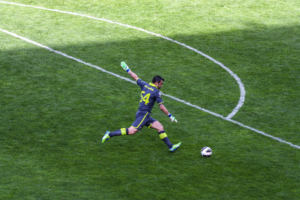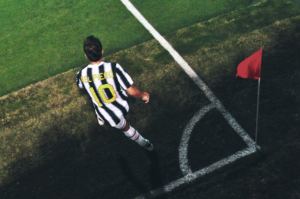19th-century soccer wasn’t known for its defensive accolades. And a look at the oldest formations in the game shows how present a desire for attacking football was at the time. Teams were more eager than ever in the game’s history to get the ball in the opposition’s half and score goals. Notably, the first international soccer match displayed how important it was for teams to play the game in the opposition’s territory.
2 – 2 – 6
- GK Robert Gardner (c)
- BK William Ker
- BK Joseph Taylor
- HB James J. Thomson
- HB James Smith
- FW Robert Smith
- FW Robert Leckie
- FW Alex Rhind
- FW Billy MacKinnon
- FW Jerry Weir
- FW David Wotherspoon
1872-Scotland and England
The 1872 fixture between Scotland and England would display a plethora of attacking intent. On the one hand, Scotland lined up in a 2-2-6 formation and bemused the English with style uncategorizable of the time. Remarkably, the Scottish took the more patient approach, organizing themselves in pairs, focusing on their partner to help them spring the ball up the field. On the other hand, England would line up in a 1 – 1 – 8 formation that periodically shifted to a 1 – 2 – 7. The English displayed a style centered around advancing the ball to the front men as quickly as possible. As a result, the forwards would focus on individual brilliance to sweep past the opposition’s defenders before finding a teammate.
Heavy on Dribbling
Offside Law 1867
When a player has kicked the ball, any one of the same side who is nearer to the opponent’s goal line is out of play and may not touch the ball himself, nor in any
way whatever prevent any other player from doing so, until he is in play; but no
player is out of play when the ball is kicked off from behind the goal line.
~ An explanation for intermediate and advanced youth referees
Players were guilty of being offside if they were ahead of the ball when a teammate kicked it. Along with discouraging goaltending, the rule also forced the players to pass the ball sideways or dribble it up the field. It was not until 1925 that offside rule would see reform.















